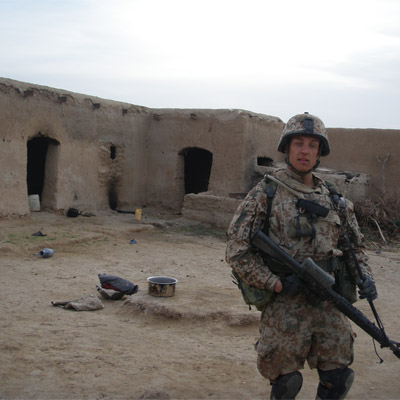This post on leading women in combat was originally written in early 2016 the wake of the US opening all combat roles for women. It was a guest post on the now closed Carrying the Gun blog. Although presented here as a five paragraphed list, the message is rather simple: Lead your troops and focus on the task. Having women the front-line is not a big deal.
Whether women are eligible to serve in combat units in the US is no longer a discussion. The first women have already passed basic infantry training and American junior officers will soon face the challenges of leading mixed units.
As a Danish army officer I have led mixed platoon-size combat units in Iraq and Afghanistan. Here is what I have learned about leading women in combat.
Do not focus on gender.
Gender is not important. Ethnicity is not important either. What is important, however, is this simple question: Does this person deliver the results expected as a part of the team. The only standards to measure by are the soldiers’ ability to do their job. Do not focus on anything else.
Measure your soldiers by the same standard
Make sure you measure your troops by the same standard. The idea that women have to prove themselves more worthy than the males by making tougher demands on them is as wrong as the opposite – lessening standards in an attempt to stuff more women into the unit. Remember: It can never be an objective to have a specific number of women in a given unit. The objective is to train and maintain a fighting force able to carry out its tasks.
Protect your unit from attention
Along with arrival of the first women in your unit comes a lot of attention. Imagine the interest of the media in the first mixed unit deployed in combat. All sorts of commentators might have an interest in the women in your unit in order to use them to promote a specific cause. Higher command might have an interest in telling the success story of women in combat.
Say no, politely. Your job as a leader is to protect your unit and focus on the task. The women in your unit are there for the same reasons as the men: to prove themselves and serve their country.
They did not become soldiers to attract the attention of the press, commentators, or higher command because of their gender.
Never accept sexism
Words have the power to move and to transform us. Never use nor allow language that implies negativity related to gender. An innocent joke about women’s lack of ability to do something, implying that it is OK to use gender as an explanation, is the first step down the wrong path.
Do not go there yourself, and strike down hard on any approach to sexism.
Allow women to be women
There is no such thing as a stereotype infantry soldier. Dark, light, big or small – the only thing that mattes is that you are able to do your job. You do not need to transform women and make them more manly in order to serve.
Allow them to be women as long as they do their job. Just as you allow the rest of your soldiers to be the individuals they are.
A final word
In the Danish army women are still a minority. Even more so in combat units. Few women make it into the infantry. The average woman certainly will not. But neither would the average man. The point is that we are looking for people who can get the job done. Gender regardless.
Focus on the task. Focus on the standards of the Field Manuals. Focus on your unit’s ability to capture the objective or to hold the ground. That is all there is.
2017 update: The most difficult task, by far, has been to shield my soldiers from unwanted attention. Interest from media, higher command and others seemed counter productive to what I was trying to achieve. And the women themselves did not join the army to become walking recruitment posters. They were here to serve.
Unwanted attention comes in many forms: Gender quotas, lowering fitness requirements for women and similar are all counter productive. Instead of helping the persons they were designed to help they single them out. Do not treat women or other minorities as problems to be managed. They are soldiers.
Shield them from unwanted attention. I think it is is a leader’s duty.

